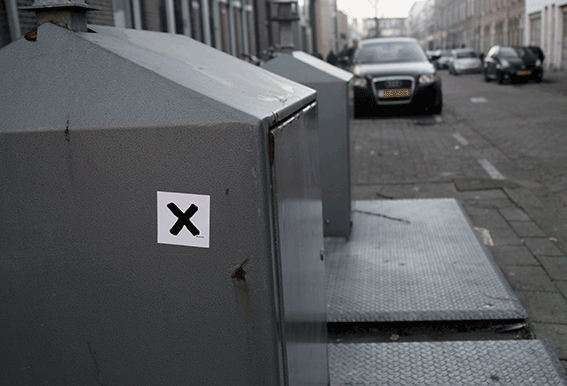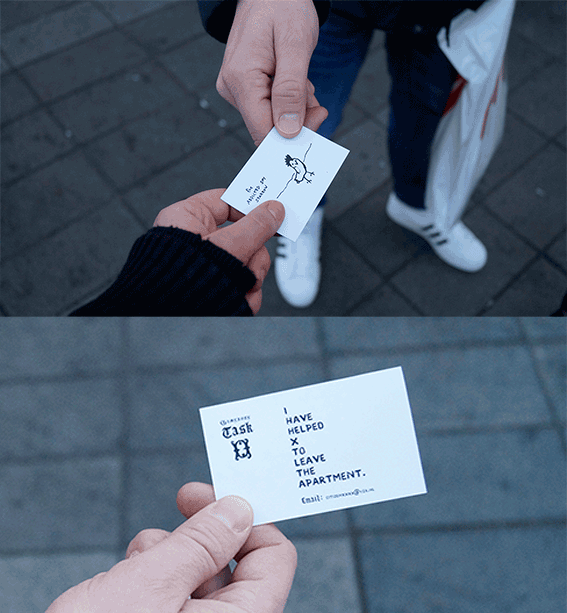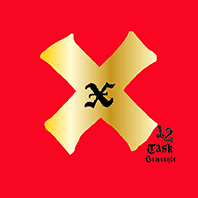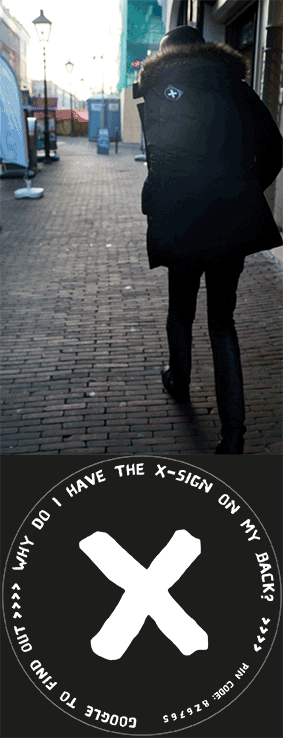User:Kul/FP
IV. Project Proposal
II. General Details / Citizen Game
As my final project, I plan to develop a game-like system of human communication in the public space. The game aims to investigate a diverse range of social anxieties and expose the discriminative and alienating processes triggered by these anxieties. In that sense project should be understood as a social and anthropological experiment that might either work out or fail within the hypothetical framework of the game.
The game dictates players to quite the conventional way of performing while being in the public space. The player is asked to involve into the series of random interactions with fellow city inhabitants in order to overcome own natural distrust. Player’s task is to initiate or, at least, imagine initiating a few disruptive, yet not spectacular, situations in the local area of own residence. The assumption of the project is that making players quit the normative “street” behaviour and putting them in the vulnerable positions enables them to analyse the conditions and quality of own social status. The game, in that sense, tends to spark self-reflectivity and self-awareness within the player.
Avatars, in a humorous way, introduce various forms of social marginalization and exclusion. The game framework requires the player to replace own subjective way of perceiving the local surrounding with the “disable” one. Proposed avatars will, additionally, bring some enjoyable qualities and opportunities to the player so that the act of switching perspectives will not turn out to be too painful or obviously didactic. This strategy aims to confront the player with the subconscious prejudices and phobias that she or he may experience when facing the other.
The framework of the game encourages the player to cruise the local area and visit the random stores, parks, staircases, walkways, stands, backyards, and occasionally, private apartments. However, since we don’t know precisely in which city neighbourhood the player is to perform the journey, the book offers only general guidelines for action and directions. The precise route has to be set individually by the player on the bases of various 0/1 questions posed in the City Guide and with the usage of player’s digital identity (various pin codes, dates, and passwords assigned to the player in “the real life”.)
Application of players’ personal views and personal date in a form of a map or a guidepost brings another important component to the gaming experience. It aims to personalize the game and bring some order to the general randomness of the player’s journey. Ultimately, however, it aims to examine, yet, another set of social anxiety connected with the popular these days practice of making personal information public. The game structure enables the player, usually oblivious to this process, to control and use his/her personal date consciously and cautiously.
While navigating through the local neighbourhood, the payer will collect points by making “friends” on the street. The process of gaining friends is designed in a way that forces player to ask for or reveal particular information regarding player’s private life. By disclosing or collecting some personal information from others, the player reaches the higher level of the game. While performing each task, the player has to provide the proof of her/his navigation process by marking visited city spots with the visual signs. (see the X.jpg) The player has to submit the proof of street interaction by handing out the contact cards to encountered strangers. The stranger is asked to keep the card and confirm the interaction with the player by sending an email to the mysterious game organisers (namely to Kul). If the stranger makes this small afford to support the player and sends a confirmation email to Kul, the street contact is approved and the player gains the point (a “friend.”)
The game structure provokes the player to leave the traces of her/his performance and identity literally “on the street.” The game structure encourages the player to become fully traceable. On the occasion of every social interaction assigned to the different task, the player leaves the cards and stickers in the public sphere. All twelve tasks (levels) help the player to find the ultimate goal (the Union Square Centimetre) and, with the precision that the game requires, mark it with the ending sign (see the Xred.jpg) During performing tasks, the generous telephonic support is offered to players; the player when troubled with the task, overwhelmed by the situation, or facing unexpected topographic obstacle can always contact the help-line (namely: call Kul on the phone.)
After all twelve tasks being achieved and marked by the player, the game “system” (meaning: Kul) starts operating; the system “runs” trough the aria of the player’s performance. It looks for stickers, collects the feedback from the strangers, and calculates the result. Depending on the player’s “precision” and record the player is being awarded with corresponding feedback.
However, the system cannot check up the player’s performance without the navigation details (personal data collected and/or assigned to the player.) Once the game is over, it is the player’s decision to submit the details to the system. If the player decides to submit the massage containing personal digits and yes/no answers (ex 37n785423yy8476622y4) the system can “run” trough the aria of the player’s performance and award the player. If the player decides to keep the navigation details to oneself all she/he has, at the end, is the experience of playing the game.
That way the game of risking player’s trust happens among three parties: the player, the encountered strangers, and the external game’s system (namely: Kul.)
I. Intention
The project may appear as an attempt to create a form of communal, almost personal, bonding between the strangers in the same neighbourhood. Yet the project intensions lie beyond the naïve idea of providing the player with the pleasant feeling of communal belonging; the aim of the project is rather contrary; to face the player with her/his overwhelming reluctance to bond with the ethnically, culturally, and economically divided surrounding.
In that sense, the project, rather then bring hope for harmonic communal co-existence, questions its factual possibility; it tries to examine, both on collective and individual level, potential obstacles and reasons why this form of social co-existence is no longer desired and exercisable (…out side of the realm of the proposed game.) The author of the game is then pondering what is the range of her personal obligation toward the society (that every player of the game tries to naturally minimalize) and what are her personal benefits coming from the social participation (that every player try to naturally maximize)?
These questions are at stake in the citizens’ game.
The aesthetic and artistic benefit of the game itself both for the players and the game “designer” lies in the quality of the personal experience that might happen between all parties involved in the game. The game scenario should trigger many opposing subconscious mechanisms within the player, like, for instance: fear of being traced and the desire for being traced, the pleasures of genuine communication with other people and the crippling anxiety that follows this act, etc. (for more information about the necessary components within the game structure see the not obligatory section I and II.) Anyways, the author is presently working on making the game worthwhile.
0. Personal motivation
Within the project described above I wish to develop a self-driven performative piece that does not require my physical presence and intervention. The performance (series of street interactions) would take place independently, between the participants and encountered strangers in the random areas of the city. In that sense I wish to activate the audience in a way that is external to the white-cube economy of art receiving and art delivering.
-1. References and the broader context
...are obvious: Dada, Fluxes, and The Situationist International…
III. Game Narrative / optional reading
Introduction
The Citizen Game is intended only for selected player; it is highly personalized. It also anticipates only a couple of player per year. The process of selection takes place on the street. After that, the way of communication with the player happens ether on-line or via phone, and regular post.
Recruitment
While being in the public sphere, the player is unexpectedly marked by the invisible hand of the system (namely: Kul.) The player, from now on called X, finds a sticker stuck to her back or a tossed business card in her bag. That is strange to X. On the sticker X finds the web address and a 5-digits code. X is asked to visit the website where she can type the code in. | see link
X might ignore the invitation, which most likely will happen, or confirm his/her interest by entering the code to the online platform. After logging in X is being informed that she has been chosen to the city project and, in case of X’s cooperation, her effort is going to be significantly awarded by the city authorities. [see link] However, before the final selection X has to answer a few simple questions on-line.If X does not “pass” the questionnaire she is politely asked to leave the page. (Game over.) If the profile of X is suitable (congratulations!) she can proceed with next steps on-line.
X gets access to the more advanced game description. She is being informed that she is going to receive gaming materials and 20-euro budget via post. Her tasks will require X to spend at least 4 hours outside. She can preform 12 tasks in 3 rounds (three different days) or all at once (on the same day.) On the occasion of each task, she has to make at least one friendly contact with the stranger. In order to be granted by city authorities she has to mark her route in the city by sticking the X signs in the public space and leave the x signs at the particular location. In case of any problems X can call the help line (nr 7973285083.) X is also being assured that no data of X will be disclosed or use against X.
X needs to accept the rules and conditions of the game, confirm that X is going to use the budget and gaming tools in the way indicated in the contract and submit X’s mailing details meaning: a full name, an address, and a postcode.
After few days X receives 13 stickers with the cross symbol, 12 business cards, 20-euro note, and the instructions book how to proceed next.
I. Relation to previous practice / super optional reading
In my previous “game-designer” practice I have developed a few experiments that helped me to understand a general mechanic of the human behaviour under the given set of rules. By the “set of rules” I understand the guidelines of games that I have proposed to PZI community within the past year. I call these experiments “games” since they bear traces of social and seemingly competitive, goal-oriented activities.
Exp1. The Animal Game designed for the purposes of the first school assignment was pointed at the teachers evaluating student’s progress. The aim of the game was to revers the classroom order by forcing the evaluators to perform in front of the students while wearing ridicules animal masks. The game was based on the particular set of rules while these rules were set on chaos and a whimsical mood of the game-master. The players, convinced that the game offers the coherent and typical for computer games guidelines, submitted themselves to absurd manipulation.
Exp2. The rules of the AH Game were designed to repurpose the shopping area of Albert Heijn into a big game board. The aim of the game was to engage the users in the intellectual and psychological game with their own ego and superego. Guided by the rules of the game the users were challenged to communicate with their sense of self by recalling personal memories, traumas, opinions, and desires. The guidelines of the game had rather playful and, I believe, romantic character in order to bring contrast to the busy and violent surrounding of the supermarket.
Exp3. The Roof Game was based on the replacement of co-present interaction with mediated contact via mobile phones. The aim of the game was to create a cryptic long-distance relationship between the players and the anonymous callers as well as increase the isolation between the players within the same physical space. During the game the player was asked to reveal personal information to their mobile-based guides in order to reach the imaginary destination before the other players. The anonymous caller acted like the embodiment of the authoritarian game’ rules; the human GPS who offer to navigate the players through the fictitious space in exchange for answering intimate questions. Each personal confession worked like a password that enabled the player to get closer to the target. The game was dealing with trust, shame, and confession. The object of the experiment was to explore how easily the player can submit oneself to the manipulative leading voice addressing him or her personally and directly. The game triggered the spontaneous verbal exchange where the interlocutors attempt to harm or gain power over one another.
II. Methods / optional reading
During mentioned above experiments I have developed a few technical assumptions and methods that I wish to apply to the final project.
M1.Translating the immaterial, linguistic, and often technology-related phenomena into the material and physical actions:
Exp1.The Animal Game: Replacing the computer game mechanisms by own subjective voice in order to mimic the law-giving authority (code, script, algorithm, legal regulation.)
Exp2.The AH Game: Attempt to substitute a server (from wiki: a computer program or a device that provides functionality for other programs or devices, called "clients") by human relations in physical space. Attempt to transform the financial transaction into emotional, spiritual and intellectual exchange.
Exp3. The Roof Game: Replacing automated GPS navigation by the human interlocutor. Replacing the religious confession and possible redemption by the Skype interviews.
M2. Examination of the mechanisms of subordination by simulating playful framework for the player’s actions:
Exp1. The Animal Game: “Forcing” players to play the game by providing a false choice regarding their participation. (See also M4.Exp1)
Exp3. The Roof Game: Manipulating the player by approaching/addressing her or him individually…on a verge of emotional intimidation.
M3. Exploring the desire of players to endlessly increase their social status; playing on their individual appetites and social aspirations:
Exp1. The Animal Game: The game proposes the selection of avatars for the players in order to question the nature of players’ apparent position within the society. Forcing the group of intelligent white western male players to undertake the role of the problematic avatars (a refugee, a capitalist, a chauvinist, a princess), brought certain discomfort at the beginning of the game, yet ultimately turned out to motivate the players to improve their assigned positions within the given structure.
Exp2. The AH Game: The game provokes a reflection on the players’ social position; it invites to examine how the shopping habits and some daily choices of particular commodities shapes the individual status.
Exp1. 2. 3. In all of the described experiments players are playing for the abstract values: the statues of the winner, the statutes of the intelligent player, the status of a creative personality, the status of a popular, amiable and social individual.
M4. Hiding the oppressive guidelines behind romantic (somewhat artistic, transcendent, or purifying) narration; creating a fake narrative as a space for individual passions and excitements; providing, both the unique experience and unconscious discomfort:
Exp1. The Animal Game provided a naïve and childish convention that enables the players to kill each other with satisfaction and excitement.
Exp2. The AH Game: The narration of the game was to help the player go deep inside own personal experience and memories. The guidelines in a form of historical, scientific, or spiritual allegories invited the player to travel between various dimensions of human existence. Additionally, the fake narration was supposed to lead the player to the cathartic, psychotherapeutic climax once the game was completed.
Exp3. The Roof Game created the opportunity to assign the far-away exotic partner to every player basing on the personal player’s profile. Few tricks were here in action: approaching the player in emotional and individual way in order to give the player a sense of uniqueness and importance; connecting the player to small bites of reality on the other side of the globe in order to simulate the imaginary trip beyond physical space and time.
M5. Building the sense of romantic, almost neurotic community that cares for each other yet knows that never shall they meet; visualizing the connection to the other and, what follows, awaking the responsibility for the anonymous other:
Exp2. The AH Game: the player was asked to recall some important figures form his or her past by touching and analysing the supermarket commodities.
Exp3. The Roof Game: The player was asked to trust and depend on the anonymous interlocutor. The attempt of the game was also to provoke the player’s imagination to envision and speculate who he or she is taking to.
Exp2.and 3. In both cases the player was ask to revisit the emotional bonding with others: parents, kids, lovers, and friends; as well as recollect moments of joy, appreciation, love, rejection, and pain.
M6. Disrupting the model of behaviour of the player; arranging some socially awkward and ambiguous situations where many of well-known solutions and well-trained reactions do not work:
Exp1. The Animal Game: By incarnating the socially problematic avatars the player puts oneself in the improper and self-critical position.
Exp2. The AH Game assumption is that pondering and praying to supermarket commodities is what an average consumer does on a daily basis. The game creates the ironic commentary to contemporary inclination to treat a supermarket as a laic temple. Therefore, the player needs to take into account that by playing this game she or he follows the self-ironic and self-critical process.
Exp3. The Roof Game aims to visualise the process of exposing embarrassing or sensitive information to unauthorized receivers under the pretence of a playful event. The idea to comment on this process is neither new nor insightful, yet always rewarding. The player, despite oneself, reveals personal information in order to stay in the game. The game aims to create the conflict within the player, unmask the process of submission to external rules and finally (and hopefully), provide the player with some self-reflective experience.
In all these cases even the initial player’s decision to join the game should be consider as morally suspicious. As the author of these double-edged experiments I would be very happy if the players come to the same conclusion while enjoying the game.
-XXXVIII. Timeline
Above I propose a long-term project that for sure goes beyond the graduation moment. Till that moment, however, I wish to execute multiple try-outs and rehearsals that help me to find the final shape of the game instructions, narrative, and procedures. I would like to make the final structure of the game executable and accessible for the external participants. I also plan to design and produce the game materials like: the guidebook, cards, stickers, and on-line platform.





